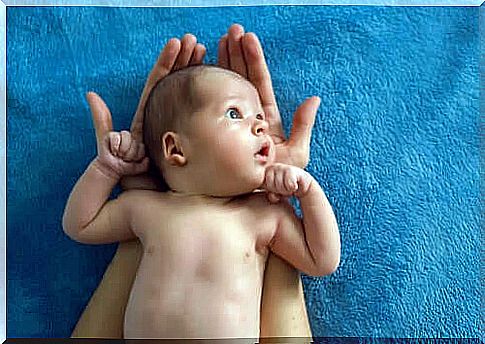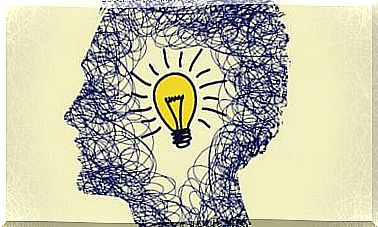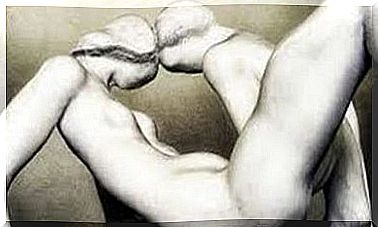How Does The Baby’s Mind Work?

Throughout history, the mind has been defined in various ways. Through the progress of research and some disciplines, today we know more. But have you ever wondered how a baby’s mind works? Is it the same as that of an adult or a child? It is undoubtedly a fascinating subject that has not been rigorously studied for too long.
Various authors throughout history have regarded infants as miniature adults and not as qualitatively distinct beings. Traveling through history we also find curious ideas; for example, Descartes believed that infants were trapped in the present moment, while William James argued that the world of infants could be summed up in a confusion of buzzing.
Over time, the different philosophical, psychological and biological theories, knowledge and reflections have become more accurate and thorough. In this article we will try to better understand how the mind of the newborn works and how and why it differs from that of the adult.

How does the baby’s mind work? The opinion of neuroscience
Neuroscience currently has means of detecting or ruling out the hypotheses of the past. Through brain activity measurement techniques, we know that newborns are able to process information in a short time. In other words, they manage to capture various sensations and give them meaning.
This is how infants are able to detect unusual stimuli even if they do not focus on a specific input. It is a wonderful and necessary faculty for learning. The absence of bias also gives them greater creative potential.
On the other hand, we know that the brain of the newborn has more neurons than that of the adult. During the development phase, a process called neuronal pruning occurs, in which connections and neurons that are not useful are eliminated.
Analyzing the connections of the cerebral cortex of the newborn, it was found that they have better connections than those of the adult, especially in the areas delegated to executive functions. This is truly fascinating, and it could be one of the phenomena responsible for our ability to learn so much in the early stages of life. Internal brain wiring would be a helpful element.
Finally, as in the adult brain, neurotransmitters are also important for that of the newborn. Their peculiar release makes infants less selective in filtering out stimuli.
Myths about the mind of the newborn
David Chamberlain, a Californian psychologist, has dedicated his work to studying the mind of newborns. In his book Children remember birth. Secrets of Your Amazing Newborn’s Mind, focuses on the most common myths about how the newborn’s mind works. Here are some of them:
- Babies do not suffer. It may seem obvious that they do, but until a few years ago it was thought not. It was believed, in fact, that they did not need anesthesia. But they also suffer and they do it thanks to the central nervous system.
- Babies have poor brains. Thanks to research, we now know that this is not the case. In fact, they have more neurons than an adult brain.
- I am unable to think. Of course they think, but they do it differently than the child or the adult.
- The newborn does not need the mother. Yes, he needs it for the role he plays as an attachment figure, as a reference and source of love.
On the other hand, perinatal psychology has highlighted the importance of the relationships that the newborn establishes for its future development. Behaviorism, on the other hand, has focused on understanding adaptation and awareness. Thanks to these and other approaches, we now know that the newborn has functions that in the past were considered non-existent.

Mental development of the newborn
As the baby grows, it changes. Some of these changes are visible, while others are so gradual or internal that they go unnoticed.
For example, the zero to two year old child learns to manipulate objects through the senses. He begins to crawl, to develop language and attachment. The mind at this age is not the same as that of a 3 year old, why?
Through interaction with the environment, the baby’s brain changes by establishing new connections and discarding less effective ones. And it does so according to the stage of development in which it is located. At the brain level, therefore, differences are produced month by month.
This will depend on the biological factors of the newborn and its interaction with the environment. Each small achievement therefore favors the development of the child. According to some experts, for example, crawling promotes the integration of the corpus callosum, a structure that unites the two cerebral hemispheres. As a result, the vestibular and proprioceptive system, the visual convergence and focus of the eyes, the sense of touch, future lateralization and writing develop.
In summary, the baby’s mind is very fascinating, it establishes connections after each learning, it needs an attachment figure to enhance optimal development and, having no prejudices, it can reveal a wonderful creative ability. On the other hand, there are still several questions to answer and others we haven’t even formulated : science is at work.









